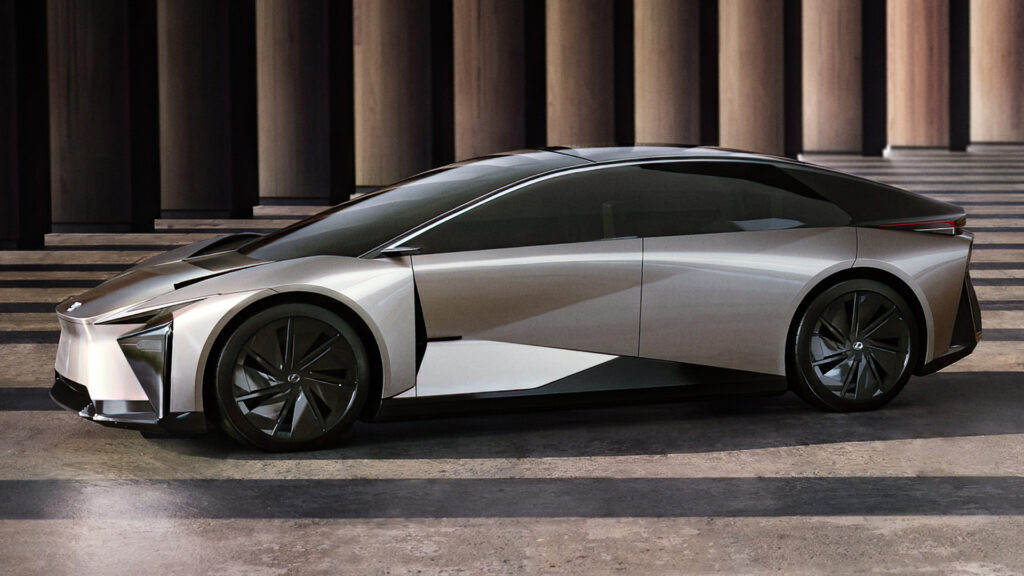See The Dodge Charger Daytona From Every Angle In Over 200 Photos

- Dodge’s new Charger Daytona coupe hits the market first in R/T and Scat Pack trims.
- The new model is already in production and is expected to reach its first owners in 2025.
- The electric muscle car will be joined by an ICE-powered version sometime next year.
Dodge is diving into the world of electric cars, attempting to blend its muscle-bound swagger with the reality of an evolving EV future. The Charger Daytona stands as Dodge’s poster child for this electric gamble, but whether it’s a seamless evolution or a try-hard cosplay of the future is up for debate. Either way, we have a massive photo gallery of the brand’s latest creation in R/T and Scat Pack trims, and there’s a lot to unpack.
Official: Dodge’s New Charger Coming To Europe And The Middle East In 2025
Production of the Charger Daytona is already underway at Stellantis’ Windsor Assembly Plant in Canada, with deliveries expected by early 2025. But if you’re one of those patient types holding out for the ICE-powered Hurricane inline-six model, grab a Snickers—it won’t be ready until spring or so.
Looks That Talk Loud, Even Without a V8
If anything, Dodge knows how to make an entrance, and the Charger Daytona’s design doesn’t shy away from theatrics. The R/T trim, particularly in Redeye, is a standout with its sharp lines and those 20-inch Blacknoise wheels. The see-through grille directing air to the hole on the sculpted hood is an EV-specific feature, as the gas-guzzling Charger needs this space for the engine. The ICE model stands out with its larger bumper intakes and proudly displayed exhaust pipes.
For the Scat Pack, Dodge leans into sporty touches like the “Stage 2” bee emblem on the profile. It also features a lip spoiler at the rear and Brembo brakes with red calipers, included as part of the standard Track Pack. The gallery showcases it in the After Dark (blue) color, alongside other options like White Knuckle (white) and Triple Nickel (silver). These represent just a few of the available colors in Dodge’s official configurator.
The Interior: Muscle Car Meets Tron
Step inside, and it’s like the Charger Daytona has been to a high-end spa and gotten a full digital detox. The cockpit has ditched the dated Challenger vibes for a much slicker (and welcome) setup. The cockpit rocks a 10.25-inch instrument cluster (upgraded to a 16-inch unit in the Scat Pack) and a 12.3-inch infotainment display. The high-mounted center console sends strong muscle car vibes, even though the EV doesn’t need this for the transmission tunnel.
More: How Does The 2024 Dodge Charger Coupe Compare To The Challenger?
The ambient lighting on the dashboard and door cards gives a futuristic tone to the cabin. Furthermore, the Scat Pack has sports seats with integrated headrests, which are upholstered in suede and Nappa leather.
EV Options With AWD
The Charger Daytona rides on Stellantis’ STLA Large platform, which accommodates both electric and ICE versions. The EV models are powered by dual motors, meaning all-wheel drive comes standard. However, this setup has drawn criticism in early reviews, particularly for the absence of the signature V8 rumble. Dodge’s solution—the Fratzonic Chambered Exhaust, a system that cranks out artificial engine noises—is certainly loud and distinct, but it remains a divisive feature, to say the least.
More: 2024 Dodge Charger Shows Its Wild Side In Widebody And Demon Renders
In the R/T, the combined output is 456 hp (340 kW / 462 PS), while the Scat Pack increases power to 630 hp (470 kW / 637 PS). Additionally, the PowerShot function provides access to a beefier 496 hp (370 kW / 503 PS) in the R/T and 670 hp (500 kW / 679 PS) in the Scat Pack, though it lasts for only 15 seconds each time.
Both EV trims are equipped with a 100.5 kWh battery pack, providing a respectable driving range of 317 miles (510 km) in the R/T and 260 miles (418 km) in the Scat Pack.
Pricing of the Dodge Charger Daytona starts at $59,595 for the R/T and at $73,190 for the Scat Pack.
ICE Is Not Dead (Yet)
While the fully electric muscle car was the first to arrive, the most anticipated version of the new Dodge Charger is the one featuring the twin-turbo 3.0-liter Hurricane inline-six engine. The engine will initially be available in two power outputs, delivering 420 hp (313 kW / 426 PS) and 550 hp (410 kW / 558 PS).
The ICE-powered Charger might have lost the V8 magic of the HEMI-powered Challenger, but it will still satisfy muscle car buyers who don’t want to make the transition to electric. After all, the V8 is out of the question for the new generation, as it would require significant re-engineering in order to fit in the engine bay.
Banshee Power Incoming
Dodge has hinted at some even more bonkers versions of the Charger Daytona in the pipeline, including an EV with the Banshee tri-motor setup. If the concept’s numbers hold up, this thing could crank out a staggering 1,320 hp (984 kW / 1,338 PS), leaving V8-powered Demons and Hellcats sulking in the corner. Whether anyone actually needs that much power is beside the point—this is, America, after all, where “excess” isn’t just a word, it’s a way of life.
Four-Door Charger Sedan
Dodge has confirmed that a four-door Charger version, set to replace the old Charger sedan, is on the way, which means you can haul the kids while pretending you’re Vin Diesel at the same time. Interestingly, both versions of the new model measure 206.6 inches (5,252 mm) long, sharing the same 121-inch (3,074-mm) wheelbase and an identical roofline. This means that the added practicality of the rear doors won’t be combined with extra space for the rear passengers.



 Vinfast recalled 4,888 VF 8 electric SUVs The center airbag mounted to the driver's seat could deploy improperly Vinfast will replace the airbag free of charge Vinfast is recalling certain VF 8 electric SUVs because of faulty airbags that could injure drivers. The recall includes 4,888 vehicles from model years 2023 to 2025. The center airbag...
Vinfast recalled 4,888 VF 8 electric SUVs The center airbag mounted to the driver's seat could deploy improperly Vinfast will replace the airbag free of charge Vinfast is recalling certain VF 8 electric SUVs because of faulty airbags that could injure drivers. The recall includes 4,888 vehicles from model years 2023 to 2025. The center airbag...  EV sales are predicted to increase sixfold by 2030 Demand for EVs and battery materials, could account for 95% of lithium supply Reuse, recycling, and alternative chemistries could take pressure off supply chains Increased global demand for electric vehicles could tax supplies of raw materials by the end of the decade, according to new analysis...
EV sales are predicted to increase sixfold by 2030 Demand for EVs and battery materials, could account for 95% of lithium supply Reuse, recycling, and alternative chemistries could take pressure off supply chains Increased global demand for electric vehicles could tax supplies of raw materials by the end of the decade, according to new analysis... 



















 Complimentary NACS adapter will allow Supercharger access to CCS EVs Details coming early in 2025; Genesis also participating 2025 Ioniq 5 has NACS port, needs opposite adapter from CCS connector for max rate Hyundai on Monday provided more information about when it will start providing adapters good for charging its EVs at Tesla...
Complimentary NACS adapter will allow Supercharger access to CCS EVs Details coming early in 2025; Genesis also participating 2025 Ioniq 5 has NACS port, needs opposite adapter from CCS connector for max rate Hyundai on Monday provided more information about when it will start providing adapters good for charging its EVs at Tesla...  2025 Hyundai Ioniq 5 is first with native NACS port NACS Hyundai EVs might charge faster—for now—with a CCS adapter Most Tesla Superchargers can’t charge at 800v at peak rates V4 cabinets rolling out in 2025 will finally match CCS The 2025 Hyundai Ioniq 5, which ships to U.S. dealerships before the end of the year, is the first...
2025 Hyundai Ioniq 5 is first with native NACS port NACS Hyundai EVs might charge faster—for now—with a CCS adapter Most Tesla Superchargers can’t charge at 800v at peak rates V4 cabinets rolling out in 2025 will finally match CCS The 2025 Hyundai Ioniq 5, which ships to U.S. dealerships before the end of the year, is the first... 






